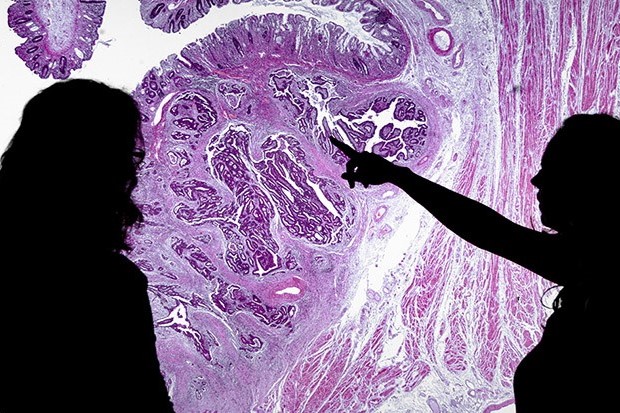Manchester Lit & Phil: Shedding new light on disease at International Anthony Burgess Foundation
Manchester Lit & Phil: Shedding new light on disease
International Anthony Burgess Foundation
3rd July 2024
Get here sustainably

Can spectroscopy and AI help in the fight against cancer?
It is well known that an early and accurate diagnosis of cancer is essential for both getting the correct treatment and obtaining the best outcome. At the first sign of trouble, a biopsy is normally taken to examine tissue from suspicious lumps or lesions. A pathologist will then stain the tissue and examine it through a conventional microscope.
Pathology services, however, are increasingly under strain. The number of pathologists is decreasing year-on-year by approximately 15%. In addition, many cancers, such as prostate, are age-related. Given that we have an ageing population, there is an ever-increasing number of samples to be analysed.
Back in 2016, Cancer Research UK reported that ‘diagnostic services, including pathology, urgently need support and investment to ensure that diagnoses aren’t delayed and patients benefit from the latest treatment, and separately that ‘Immediate action is needed to avert a crisis in pathology capacity and ensure we have a service that is fit for the future’.
The government has suggested histopathology is ‘a key area ripe for technological revolution’. Part of that technological revolution is occurring in the form of Artificial Intelligence (AI). As we move from looking under a microscope to taking a digital image, pathologists are able to use AI to analyse these images and pick out key features that are indicative of cancer. These new analysis methods can help the pathologist in making the correct diagnosis.
AI, however, is not the only technology that is being explored. New spectroscopic microscopes are being developed that do not require any stains or dyes to “see” the tissue. The image is created by analysing vibrations in molecules that make up the tissue. AI can then be used to probe these chemical maps and look for features that cannot be seen under a conventional microscope.
These new techniques are very much in the developmental stage, but it is hoped that such methods will soon be available to help pathologists and improve cancer care.



